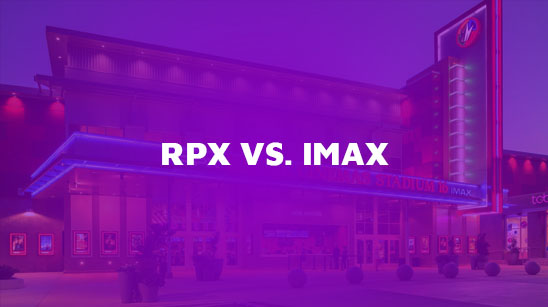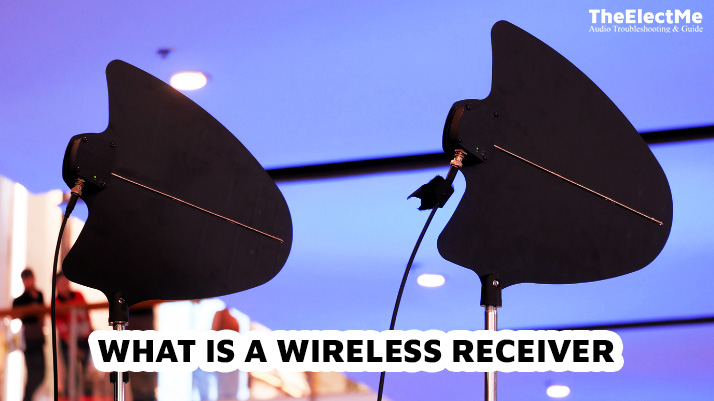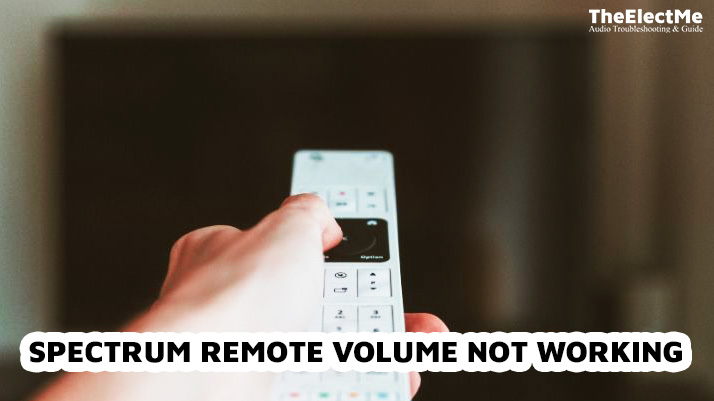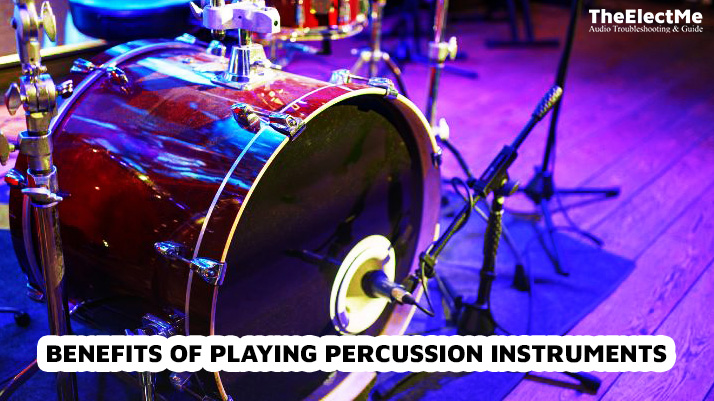A radio station is a system that broadcasts audio signals through radio waves. It is a crucial medium for delivering news, entertainment, and information to the public. From receiving sound waves to transmitting them through antennas, each part of a radio station plays a significant role in its overall function.
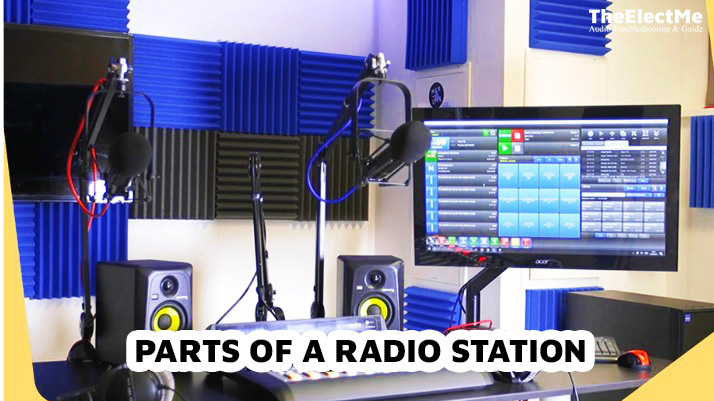
What are the essential parts of a radio station that make it possible for us to tune in and listen to our favorite shows? Let’s explore them in more detail below.
Essential Parts of a Radio Station That You Should Know
When you turn on your radio, you are tuning into a complex system of equipment that works together to bring you audio content. Here are the essential parts of a radio station and their functions:
1. Antenna
A radio station’s antenna is responsible for transmitting the audio signals to the listeners’ radios. It converts electrical signals into radio waves and sends them out into the air. The type of antenna used depends on the frequency and power of a particular radio station.
Pros
- Effective transmission over long distances
- Can be adjusted for better signal reception
Cons
- Susceptible to weather interference
- Limited coverage in remote areas
Antennas play a crucial role in the reach and quality of a radio station’s broadcast. However, they can be expensive to install and maintain.
2. Transmitter
The transmitter is the core component of a radio station. It takes in the audio signals from the studio and amplifies them to be transmitted through the antenna. It also plays a significant role in regulating the frequency and power of the broadcast.
Pros
- Amplifies audio signals for better transmission
- Allows for control of broadcast frequency and power
- Ensures consistent audio quality during transmission
Cons
- Expensive to repair or replace
- Can cause interference with other electronic devices
- Requires skilled technicians for maintenance
Without a functioning transmitter, a radio station could not broadcast any audio content. However, they can be costly to repair or replace if malfunctioning.
3. Studio
The studio is where all the audio content for a radio station is created. It includes equipment such as microphones and mixing boards.
The studio allows for live broadcasts, pre-recorded shows, and editing of audio content before it is transmitted.
Pros
- Versatile for different types of broadcasts
- Allows for pre-recording of shows for scheduling flexibility
- Enables editing and enhancing of audio content before transmission
Cons
- Requires a soundproof room, which can be expensive
- Technical issues can disrupt live broadcasts
- Can be costly to upgrade equipment
The studio is the heart of a radio station, where all the audio content is produced. However, it can be costly to maintain and upgrade equipment for better-quality broadcasts. Most of the studios buy iHeart radio subscriptions. How to cancel iHeart radio subscription?
4. Receiver
The receiver is the final component in the chain of a radio station. It captures and converts radio waves into audio signals that listeners can hear. Without a functioning receiver, a listener cannot tune in to their desired radio station.
Pros
- Allows for tuning into different stations
- Affordable and widely available
- Can be portable for listening on the go
Cons
- Can experience interference or static
- Limited range compared to antennas
- Requires batteries or power source
The receiver is crucial for listeners to receive a radio station’s audio signals. However, it may experience interference and have a limited range compared to antennas.
These are basic components of a radio station that work together. Let’s explore the technical equipment in more detail below.

Technical Equipment Used in a Radio Station
A radio station also has technical equipment that is essential for its smooth operation. These include:
1. Mixing Console
A mixing console is also known as a mixing board or mixer. It is a device used to combine and adjust the audio signals from various sources, such as microphones and music players. The mixing console allows for control of volume, tone, and effects on the audio signals before they are transmitted.
Pros
- Allows for adjusting audio signals for optimal sound quality
- Can mix multiple audio sources simultaneously
- Offers flexibility in creating unique sound effects
Cons
- Can be complicated to operate and requires training
2. Microphone
A microphone is a device used to capture and convert sound waves into electrical signals. It plays a crucial role in recording audio content for a radio station. Here are some pros and cons of using microphones:
Pros
- Captures clear and accurate sound
- Offers versatility in capturing different types of audio
- Can be used for live broadcasts or pre-recorded shows
Cons
- Can be susceptible to background noise and interference
3. Audio Processors
Audio processors are devices used to enhance and improve the quality of audio signals. They can adjust the volume, clarity, and sound effects of a broadcast. Here are some pros and cons of using audio processors:
Pros
- Enhances overall sound quality
- Can reduce background noise and interference
- Allows for customization of audio signals for a specific audience
Cons
- Can be costly to purchase and maintain
- May require technical expertise to operate effectively
Above is the technical equipment commonly used in a radio station. Let’s discover studio equipment in more detail below.

Studio Equipment Used in a Radio Station
Studio equipment is used to create and produce audio content for a radio station. They include:
1. Recording Software
Recording software, also known as digital audio workstations (DAWs). It is used to record, edit, and mix audio content. The key advantage of recording software is its ability to record multiple tracks with precise editing. Some pros and cons of using recording software in a radio station are:
Pros
- Offers flexibility in creating and editing audio content
- Can save and store recordings for later use
- Provides advanced tools for sound enhancement and mixing
Cons
- Can be expensive to purchase and may require regular updates
As technology advances, virtual mixers, and online streaming platforms are gaining popularity in radio stations.
2. Headphones and Speakers
Headphones and speakers are essential for monitoring and balancing audio levels in a radio station. They allow for clear listening of recorded or live content before it is transmitted to listeners. Here are some pros and cons of using headphones and speakers:
Pros
- Helps in detecting and adjusting audio issues before broadcast
- Can provide accurate sound representation for quality control
- Enables communication between hosts and producers during live broadcasts
Cons
- May not always reflect the exact sound heard by listeners, leading to potential discrepancies
As technology advances, wireless headphones and speakers are becoming popular in radio stations for added convenience and mobility.
3. Soundproofing Materials
Soundproofing materials are used to reduce outside noise and echo within a studio. This is crucial for creating high-quality audio content without interference or distractions. The market offers various soundproofing options. Here are some pros and cons of using soundproofing materials:
Pros
- Ensures clear and professional audio quality
- Offers versatility in customizing a studio’s acoustics
- Can improve the overall listening experience for listeners
Cons
- May require regular maintenance to maintain effectiveness
A well-equipped studio is essential for a successful radio station. They have a connection with some good places for rap videos. Let’s explore the supportive equipment used in a radio station next.
Supportive Equipment Used in a Radio Station
In addition to the technical and studio equipment, there is also supportive equipment that helps in the smooth operation of a radio station. These include:
1. Cable and connectors
Cables and connectors are used to connect various equipment in a radio station, such as microphones, speakers, and mixers. They ensure that audio signals are transmitted accurately without interference. Here are some pros and cons of using cables and connectors:
Pros
- Essential for the proper functioning of technical equipment
- Offers a wide range of options to connect different types of equipment
- Can reduce audio signal loss during transmission
Cons
- May be prone to wear and tear, requiring regular replacement
2. Backup Power Supply
A backup power supply is crucial for a radio station in case of a power outage. It ensures that the broadcast can continue uninterrupted and prevents any loss of content or data. Here are some pros and cons of using a backup power supply:
Pros
- Ensures smooth operation during power outages
- Protects equipment from potential damage
- Can be used as a backup for other critical systems in the station
Cons
- Requires regular maintenance and testing to ensure effectiveness
These are some of the important equipment used in a radio station. Each one plays a unique and essential role in creating high-quality audio content for listeners.
Final Thoughts – What are the parts of a radio station and their function?
To sum up, a radio station is made up of various parts, each with its function and purpose. The technical equipment is used to produce audio content. Studio equipment is used for recording and editing.
On the other hand, supportive equipment contributes to the smooth operation of a radio station. From audio processors to cables and connectors, each piece of equipment plays an important role in delivering quality broadcasts.
As technology advances, new equipment and tools will continue to shape and enhance the radio broadcasting industry. So, continuous learning and adaptation are essential for success in this dynamic field.
